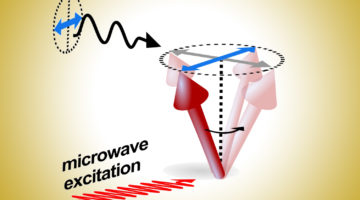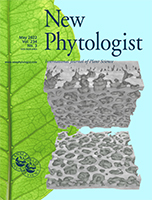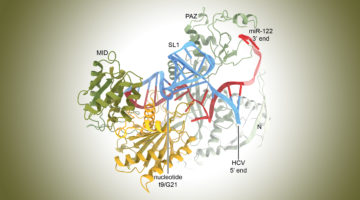Researchers found that ribbon-like thin films, grown through a bottom-up, self-assembly approach, can act as ultrahigh-quality nanoscale resonators of lattice vibrations at infrared frequencies. These ultrathin nanostructures are ideal platforms for applications that harness infrared light, such as thermal emission and molecular sensing. Read more »![]()
![]()
ALS in the News (April 2022)
Dynamic Measurements of Antiferromagnetically Aligned Spins
Researchers developed a technique that enables time-resolved, direct detection of spin currents in either ferromagnetic or antiferromagnetic materials at GHz frequencies. Studying the dynamic properties of antiferromagnetic spintronic effects could lead to greater stability and faster intrinsic switching speeds compared to conventional spintronics. Read more »
Key to Coral Resilience Is Faster Skeletal Crystallization
In a new study, researchers show that the crystallization rate of coral skeletons differs across species and is correlated with their resilience to ocean acidification. The results have implications for predicting coral reef survival and developing mitigation strategies against having their bony skeletons weakened by ocean acidification. Read more »
A Novel Insulating State Emerges in a 2D Material
Researchers found a unique insulating state in an atomically thin material, driven by the combined effects of lattice–charge interactions and atomic-bond formation. The work provides a better understanding of charge ordering in two-dimensional materials and opens up new possibilities for achieving designer electronic properties. Read more »![]()
![]()
Newly Discovered Bacterial Enzyme Produces Useful Biopolymer
Researchers identified a bacterial enzyme that produces a novel biopolymer. The polymer, dubbed acholetin, is a chain of sugar molecules known as a polysaccharide. Acholetin is similar in structure to chitin, the major component of insect exoskeletons, and holds promise as a useful biomaterial because of its biodegradability and biocompatibility. Read more »
Structural organization of the spongy mesophyll
Many leaves have two layers of photosynthetic tissue: the palisade and spongy mesophyll. The latter is not well characterized and often treated as a random assemblage of irregularly shaped cells. These results show that simple principles may govern the organization and scaling of the spongy mesophyll in many plants and demonstrate the presence of structural patterns associated with leaf function. Read more »
What Drives Electron–Hole Asymmetry in Graphene?
Using the ALS, researchers determined that interactions between electrons are what give rise to the divergent effects observed when graphene is doped with electrons versus holes. A better understanding of this electron–hole asymmetry could lead to new avenues for generating exotic material phases, including unconventional superconductivity. Read more »![]()
![]()
ALS in the News (March 2022)
-
-
-
- Scientists uncover surprising new clues to exotic superconductors’ superpowers
- Growing extremely tiny, uniformly sized diamonds—without explosives
- Scientists discover how molecule becomes anticancer weapon
- How x-rays can make better batteries
- Safely studying dangerous infections just got a lot easier
- Metal-organic frameworks can capture toxic air pollutants
- Common scaling of strange-metal scattering in unconventional superconductors
-
-
Molecular Hijacking of a MicroRNA by the Hepatitis C Virus
The hepatitis C virus (HCV), which attacks the liver, is known to repurpose host-cell components known as microRNAs—short RNA strands that act to silence gene expression. Now, the molecular structure of an HCV site bound to a microRNA complex revealed how their interactions shield the virus from the host cell’s protective response. Read more »
- « Previous Page
- 1
- …
- 23
- 24
- 25
- 26
- 27
- …
- 83
- Next Page »







